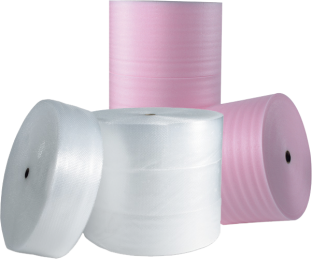 Bubble wrap has long been a pop-culture staple. Part of the fun of opening a package is popping the bubbles. But bubble wrap is far more important than just a source of entertainment; it plays a critical role in protecting your products during shipping.
Bubble wrap has long been a pop-culture staple. Part of the fun of opening a package is popping the bubbles. But bubble wrap is far more important than just a source of entertainment; it plays a critical role in protecting your products during shipping.
Foam is another packing solution that provides lightweight cushioning and protection. Both materials fill voids in boxes to hold items securely into place, preventing damage to your product during shipping and handling. And both do their job without adding unnecessary weight to the package.
Which one is the right choice for your product?
The Case For Bubble Wrap
Bubble wrap offers the ultimate cushioning for fragile items. Because the bubbles of air suspend the product in the box, bubble wrap absorbs shock and protects items from damage.
Bubble wrap comes in a variety of bubble sizes; there are even heavy duty rolls that can be used for machine parts and motors, and its durability makes it ideal for lengthy shipping in extreme conditions.
Other types of bubble wrap include perforated and non-perforated rolls, large sized rolls for UPS, and bubble pouches. There are also bubble wraps for special applications including pink anti-static rolls for use with electronic components and adhesive bubble wrap that sticks to the product without leaving glue behind.
When Foam Packaging Works Best
Polystyrene foam is also an excellent cushion for fragile items. Instead of large, popable bubbles, foam sheets are filled with thousands of tiny air cells that cushion a product without the added bulk. Because foam is thinner, it allows you to wrap products and stack them, allowing you to fit more items in a box while still protecting individual items from being damaged. Foam also provides added thermal insulation to protect items that are temperature sensitive, like electronics.
Pre-cut foam sheets are ideal for stacking items that need to be packed together such as dishes. Using foam sheets saves packaging time by allowing you to stack items quickly with sheets between them rather than individually wrapping each item.
Foam corners and edge protectors are used to protect large items from shifting within the box itself and provide excellent shock absorption. Foam edges also provide a buffer between the product and the box in case a carton gets cut or damaged in shipping.
Foam sheets, rolls, corners and edges come in a variety of sizes to fit any needs. Whether you choose foam packaging or bubble wrap, you’ll be able to effectively protect your product from damages without adding extra weight and shipping costs.